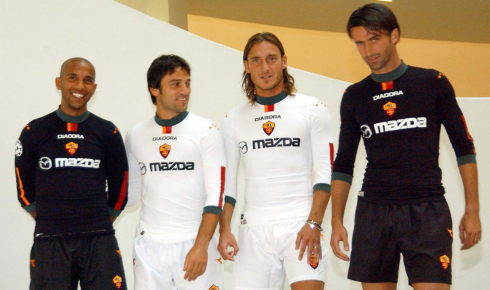There’s a certain romance to football that can’t be explained by tactics, statistics, or even trophies. Sometimes, it’s the small things that carry the most weight—the chants that echo in the stands, the pre-match nerves that feel like butterflies, and, of course, the jerseys. A football shirt isn’t just polyester stitched together for 90 minutes of running. It’s a flag, an identity, and often, a personal memory wrapped in fabric.
Every fan has that one jersey that means more than the rest. Maybe it’s the one from your childhood, oversized and faded, or the one you bought the year your club finally won a title. Jerseys aren’t just clothes; they’re reminders of where you were when your team made you cry tears of joy—or frustration.
Take Barcelona, for example. Each year, they unveil something bold, something that makes the football world stop and look. The barcelona new jersey always sparks debate—sometimes praised for its daring creativity, other times questioned for straying too far from tradition. Yet, regardless of opinion, fans line up to buy it, because that shirt is more than fashion. It’s a piece of Catalan pride, a canvas that represents artistry both on and off the pitch.
What’s fascinating about Barcelona’s approach is their willingness to reinvent without losing identity. The stripes may shift, the patterns might shock, but the essence—the blaugrana heartbeat—remains untouched. Wearing it feels like joining a story that started long before you, and will continue long after.
On the other side of Europe, Chelsea offers a different vibe. There’s something about the chelsea jersey that feels solid, grounded, almost understated. The deep blue has become a symbol of resilience, a reminder of the club’s rise from underdogs to European giants. You look at old kits and immediately recall Drogba’s header in Munich, Lampard’s celebrations, or Terry lifting silverware. The shirt itself feels like a scrapbook of moments etched in the minds of supporters.
Chelsea’s kit has gone through plenty of tweaks—subtle trims, sponsor swaps, bold experiments—but the blue never loses its meaning. For fans, slipping it on is less about how it looks and more about what it represents: loyalty, determination, and a belief that Stamford Bridge is more than just a stadium.
And then, there’s Juventus. Few clubs understand the power of a jersey quite like them. The black-and-white stripes are instantly recognizable worldwide, almost like a universal football language. The juventus jersey has carried legends through eras, from Del Piero to Buffon, and continues to symbolize both tradition and reinvention.
What’s interesting about Juve is how they balance heritage with modern flair. Some years, the stripes are bold and classic; other years, designers experiment with gradients or unusual details. Fans may argue over whether it’s too “fashion-forward,” but at its core, that shirt still carries Turin’s proud legacy. When you wear it, you’re wearing more than just a kit—you’re wearing history stitched into fabric.
What makes jerseys universally powerful, though, isn’t just their design. It’s the emotions they evoke. A shirt can transport you back to a specific moment in time. Maybe you remember the smell of the stadium, the chant that gave you goosebumps, or the way your heart raced during a penalty shootout. All of that comes rushing back the second you see that familiar crest on a jersey.
And it’s not limited to being in the stadium. Football shirts have this uncanny ability to create connections across the globe. You can walk into a café in South America wearing a Barcelona shirt, and instantly someone might nod at you in recognition. Or you could stroll through a market in Asia with a Chelsea kit, and suddenly you’ve got a conversation starter. They’re like passports, silently saying, “This is who I am, this is where I belong.”
Of course, jerseys also carry quirks that every fan knows too well. The annual kit launches bring a mix of excitement and eye-rolls. Clubs hype up new designs with cinematic ads, fans rush to judge them, and by the end of the season, even the ones that were initially hated somehow become cult classics. Time has a funny way of softening opinions—what once looked “ugly” eventually becomes “retro gold.”
And let’s be honest, the price tags sting. Modern kits aren’t cheap. Every season, fans complain, but still, sales keep soaring. Because deep down, we know it’s not just about owning a shirt—it’s about owning a piece of the club. It’s about wearing your allegiance on your chest, quite literally.
The ritual of putting on a jersey is something special too. Match day doesn’t feel complete without it. It’s like putting on armor before battle, even if that battle is just yelling at your TV from the couch. Kids wear them to school, adults wear them to pubs, and grandparents gift them to grandchildren. Jerseys tie generations together, reminding us that football isn’t just played on the pitch—it’s lived at home, in communities, and in the quiet corners of our everyday lives.
And sometimes, the jerseys themselves outlast players, managers, even eras. Clubs rise and fall, players come and go, but that shirt—whether in red, blue, black, or white—remains a constant. It’s the one thing fans can always cling to, even when the football itself breaks their hearts.
Looking at it all, it’s easy to see why football jerseys matter so much. They’re not just sportswear or fashion pieces. They’re emotional anchors. They remind us of where we’ve been, who we’ve cheered for, and why we care so deeply about a game that can be both cruel and beautiful in the same breath.
When you hang one in your closet, it’s not just a shirt. It’s a memory, a promise, and sometimes, a small piece of hope for what’s still to come.
And that’s why, no matter how many designs clubs roll out, no matter how many critics scoff, we’ll keep buying them, wearing them, and treasuring them. Because they’re not just jerseys—they’re part of who we are.


